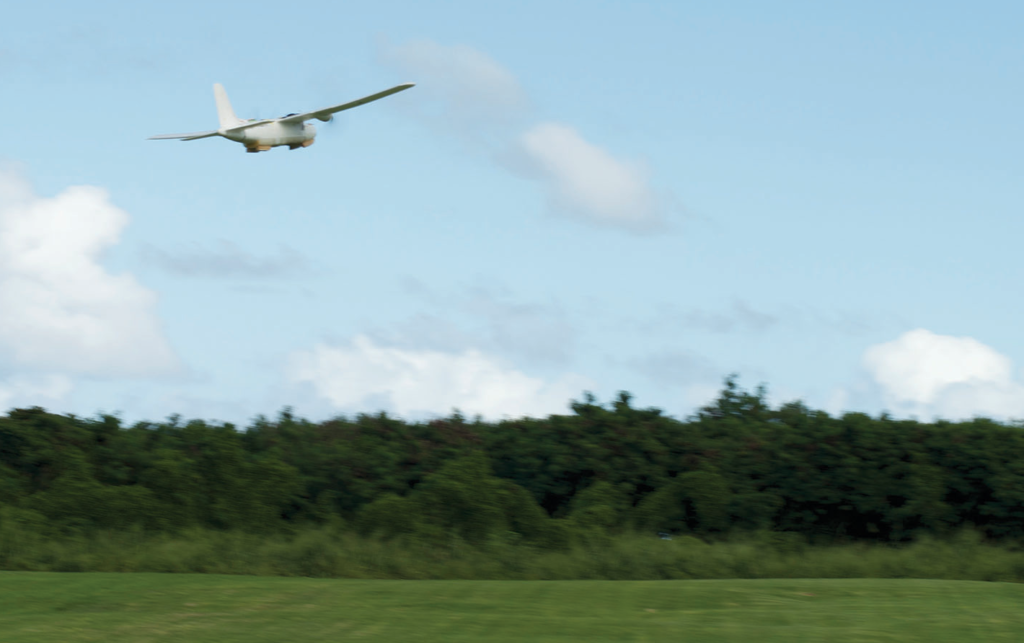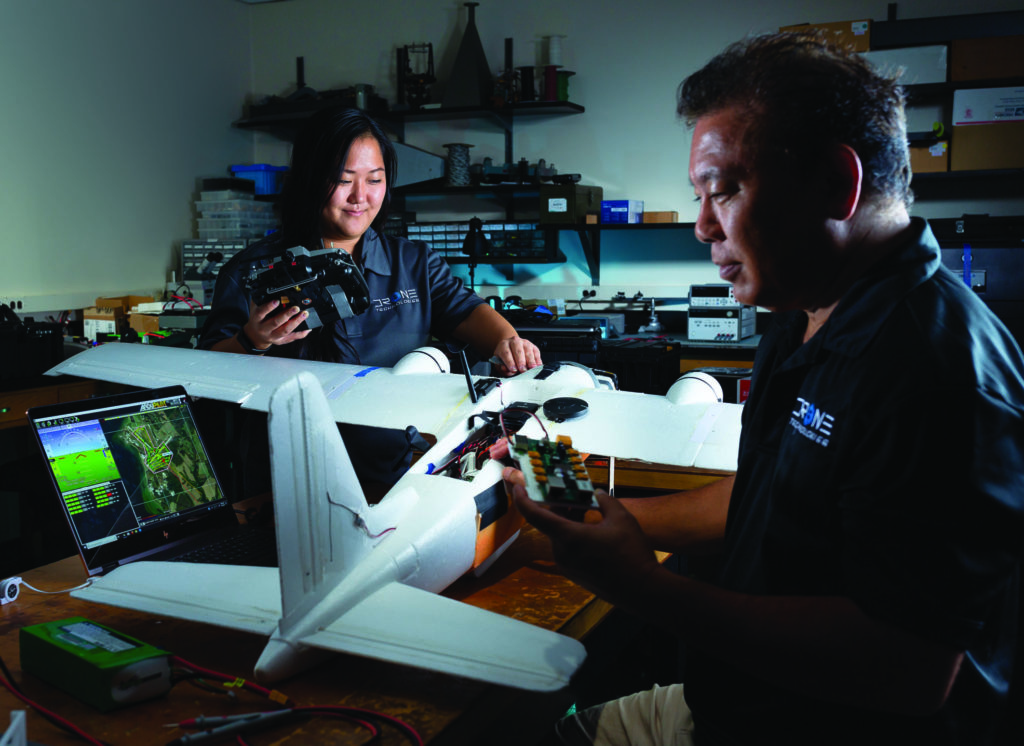Unmanned Aerial Systems Research at the UH Mānoa College of Engineering
The world has recently experienced natural disasters unlike any other period in recent history, with earthquakes, hurricanes, tsunamis, floods and wildfires affecting thousands of lives. In the search-and-rescue (SAR) operations for Hurricane Harvey alone in 2017, the United States Coast Guard rescued 11,082 civilians in Louisiana and Texas by deploying 2,060 personnel, 50 rotary and fixed-wing aircraft, 75 shallow-water boats and 29 cutters.
Six years ago, a team of University of Hawai‘i at Mānoa (UH Mānoa) College of Engineering students began investigating whether a drone—or more formally an unmanned aerial system (UAS)—could assist in SAR operations. A UAS could be deployed for immediate SAR operations for locating missing people and relaying information to emergency responders—particularly relevant in light of Hawai‘i’s remote location, which would certainly hamper federal relief efforts in the aftermath of a natural disaster.
In its quest to test the performance envelope of UASs in these roles, UH Mānoa’s student team—known as the University of Hawai‘i Drone Technologies (UHDT) program—has participated in an international competition that simulates SAR missions. Organized by the Association for Unmanned Vehicle Systems International (AUVSI), the Student Unmanned Aerial Systems (SUAS) Competition is an annual event that challenges students to design a UAS capable of autonomous flight and navigation, target acquisition and identification, and package delivery to a specified target.
For the simulated SAR mission, the UAS must first navigate a set of waypoints. The UAS then searches for targets within a predefined 370,000-meter2 area, capturing images every four seconds while flying a linear, cross-grain search pattern at an altitude of 70 meters. The UAS processes the images in real time via the onboard Raspberry Pi, a low-cost, high-performance computer made popular in robotics applications. The images are then transmitted to a ground station computer with processing algorithms to filter the images to identify possible targets and characteristics such as shape, background color, alphanumeric symbol, alphanumeric color and GPS coordinates. Next, the UAS must fly to a specified air-delivery location where it deploys a payload. For the 2019 competition held this past June, the payload consisted of an eight-ounce water bottle carried by an unmanned ground vehicle that was parachuted and then autonomously driven to a target. To complete the simulated mission, the UAS was required to autonomously return home to the launch point.
In the first year of competing, UHDT finished 17th out of the 54 international teams at the 2016 AUVSI SUAS Competition. In its second year, UHDT ranked sixth out of 54 international teams and third nationally. This is an impressive level of achievement given that the students themselves carried out the engineering design, analysis and manufacture for all of the UAS subsystems including airframe, image processing, wireless communications, package-deployment mechanisms and sensor integration.
In 2018, taking its cue from Amazon’s drone program for home delivery, UHDT began working with the Applied Research Laboratory at the University of Hawai‘i (ARL/UH) to design a UAS package-delivery system to maritime vessels in need of emergency supplies or spare parts in the open ocean. The UHDT students are currently working on a semi-autonomous UAS capable of transporting a five-pound payload to a maritime vessel five miles offshore, while being able to operate in 10-knot winds.
“The students work with minimal guidance from their faculty, with students training students in a customer-oriented, project-based learning environment,” said Ted Ralston, director of unmanned aerial systems for ARL/UH, who has served as a UHDT advisor from the program’s inception. “This long-term and in-depth approach fosters student engagement and helps to better prepare them for future careers.”

The team’s success is a product of the University of Hawai‘i’s Vertically Integrated Projects (VIP) Program, where teams are “vertically integrated”—consisting of a faculty mentor, graduate student researchers and undergraduates of all levels. The teams are large (10 to 20 undergraduates each semester), the projects are long-term (at least five years in scope), and are based on an externally funded research topic. Undergraduates in VIP teams earn academic credit for their participation.
“Faculty mentor graduate students, who in turn mentor seniors/juniors, who in turn mentor sophomores/freshmen, who in turn mentor high school students,” said Wayne Shiroma, electrical engineering professor and UHDT faculty advisor. “Participating undergraduates are required to remain with a project through graduation, so that as a student rises in maturity to the senior level, the depth of knowledge is approximately the same as a first-year graduate student. This is one of the secrets to the success of our VIP Program here at UH.”
“The UHDT program has engaged over 100 students from high school to graduate levels in computer, electrical and mechanical engineering, and UHDT alumni have done quite well for themselves,” said Evan Kawamura, currently a PhD student at UH Mānoa who has been participating in UHDT since his sophomore year.
Chase Yasunaga, a former UHDT student program manager, did so well in his presentation to North Star Scientific Corporation, a Hawai‘i-based technology company—that they have become sponsors of the UHDT program for the past two years. Another former UHDT student program manager, Kalani Danas Rivera, currently a PhD student at Cornell University, credits his UHDT experience as the most consequential out of all of his college-year activities.
“Nothing captures the imagination of a new college student like getting outside and actually flying a drone, particularly a drone the student helped design and build,” said Zac Trimble, mechanical engineering professor and faculty advisor. “Plus, seeing their work in action and participating in competitions helps to fast track students in their learning process.”
“Competitions are always exciting, but watching drones from around the world compete against each other is even more thrilling. It’s literally a Game of Drones,” deadpanned Shiroma.

